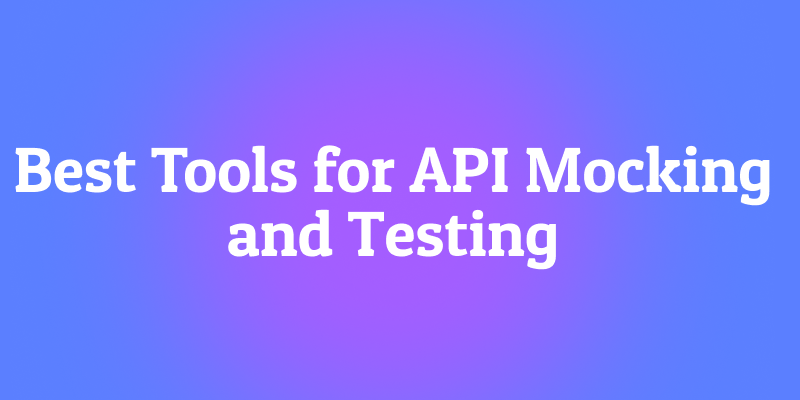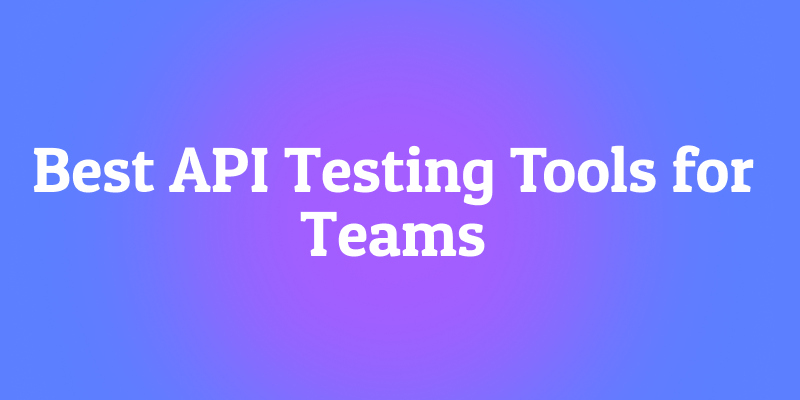Let's talk about a common challenge in modern software development: waiting for APIs to be ready. It happens all the time. The frontend team is prepared to build the interface, but progress stalls because the backend API isn't finished. At the same time, the backend team is under pressure, working with requirements that keep changing. The result? Frustrated teams, isolated workflows, and timelines that feel more like wishful thinking.
This is exactly where API mocking and testing tools make a difference. They remove blockers, improve collaboration, and help teams ship stable, reliable features. But with so many tools available, choosing the right one can be overwhelming.
The truth is, the best tool depends on your team's workflow. Do you need a simple mock server? A strong automation testing solution? Or a complete all-in-one platform? To help you decide, we've put together a list of the top 7 tools that are reshaping how teams build and work with APIs today.
What Makes a Great API Mocking and Testing Tool?
Before we jump into the list, let's establish what we're even looking for. A great tool does more than just send a request and check for a 200 status code. Here's what separates the best from the rest:
- Effective Mocking: Can it create realistic mock servers quickly? Does it allow for dynamic responses and different scenarios (happy path, errors, edge cases)?
- Powerful Testing: Does it go beyond basic assertions? Can you handle authentication, chain requests together, and write complex validation scripts?
- Collaboration Features: Can your team easily share collections, mock servers, and test results? Is there a single source of truth?
- Developer Experience (DX): Is the interface intuitive? Is it easy to get started, or is there a steep learning curve?
- Automation & CI/CD: Can you integrate your tests into a continuous integration pipeline to catch bugs automatically?
- API Lifecycle Support: Does the tool help with design, documentation, and monitoring, or is it focused solely on testing?
With this scorecard in mind, let's meet the contenders.
Top 7 API Mocking and Testing Tools
1. Apidog: The All-in-One Collaborative Powerhouse

Let's start with the tool that takes a unified approach to the entire API lifecycle. Apidog isn't just a testing client or a mocking tool; it's a integrated platform that combines the capabilities of tools like Postman, Swagger, and Mocking services into one cohesive experience.
Why Apidog Stands Out:
- Seamless Mocking & Testing Workflow: This is its killer feature. You design an API endpoint once, and you can immediately test it against a live server and generate a mock server from the same definition. There's no context switching or exporting/importing between different tools. The mock server is instantly available the moment you save your API spec.
- Exceptional Real-Time Collaboration: Multiple team members can work on the same API project simultaneously, with changes syncing in real-time. This is perfect for designing APIs as a team, where a backend developer and a frontend developer can look at the same contract and mock server together.
- Design-First Friendly: Apidog strongly encourages a design-first approach. You can define your API schema, and the mocking and testing features are built directly on top of it, ensuring your tests and mocks are always in sync with your design.
- No-Code Mocking Rules: You can set up intelligent mocks that return dynamic data (like realistic names, emails, etc.) without writing a single line of code, making it incredibly accessible for entire teams.
The Bottom Line: Apidog is the ideal choice for teams that are tired of juggling multiple, disconnected tools. If you want to streamline your workflow from design to mock to test to documentation, Apidog is a top-tier contender that eliminates friction and boosts team productivity.
2. Postman: The Ecosystem Giant

It's impossible to talk about API tools without mentioning Postman. It's the tool that popularized the API client for a massive community of developers. It's evolved from a simple Chrome extension into a vast API platform.
Postman's Strengths:
- Unmatched Ecosystem and API Network: The public API network is a huge resource, allowing you to discover and fork collections from thousands of popular services. Its extensive collection of integrations makes it highly extensible.
- Comprehensive Feature Set: Postman does it all: testing, mocking, monitoring, and documentation. Its feature depth is impressive, with powerful scripting capabilities in its pre-request and test scripts.
- Workspaces and Collections: The organization system using workspaces and collections is robust and well-understood by millions, making it easy to structure large API projects.
Where It Can Stumble:
- Tool Sprawl: Because its features have been built over time, the mocking experience can feel somewhat disconnected from the core testing experience compared to a unified tool like Apidog. Check out how Apidog's mocking feature compares with Postman's here.
- Performance and Cost: The app can feel heavy with large collections, and the pricing model can become expensive for teams that need advanced collaboration features on a large scale.
The Verdict: Postman is a powerful, reliable choice, especially if you're already invested in its ecosystem. It's a safe bet, but be mindful of potential complexity and cost as you scale.
3. Mockoon: The Mocking Specialist
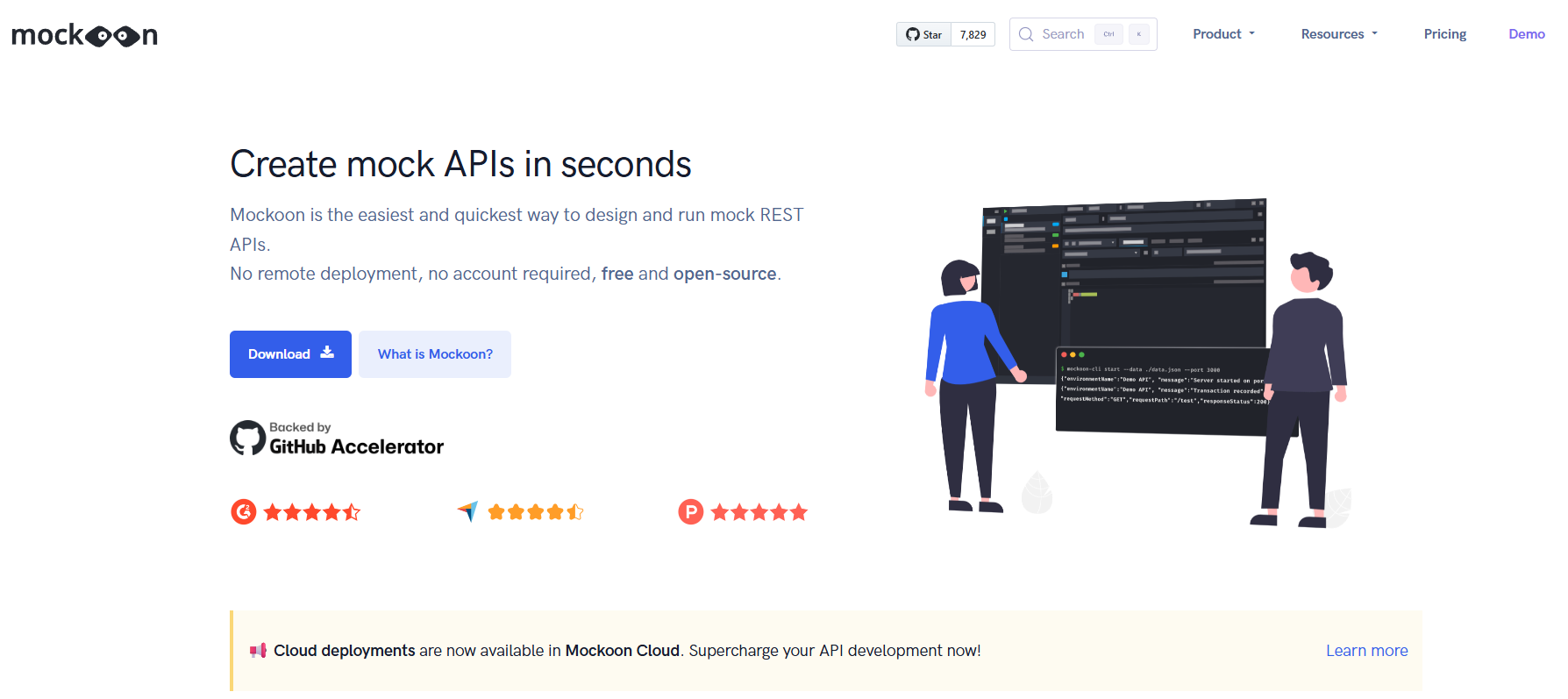
Sometimes, you don't need an entire platform; you just need a fast, reliable mock server. That's where Mockoon excels. It's an open-source, desktop-focused tool dedicated purely to API mocking.
Why Mockoon is a Favorite:
- Incredibly Simple and Fast: Mockoon is lightweight and runs locally. You can create a mock API with multiple endpoints and responses in minutes without creating an account or relying on a cloud service.
- Complete Control: It offers advanced mocking features like rules-based responses (e.g., respond differently based on query parameters or headers), latency simulation, and file serving.
- CLI & Docker Friendly: For more advanced use cases, Mockoon can be run from the CLI or in a Docker container, making it suitable for CI/CD environments where you need to spin up a mock server for integration tests.
The Catch:
Mockoon is only for mocking. You'll need a separate tool (like Apidog or Postman) for your actual API testing and design. It's a fantastic specialist, not a generalist.
4. Stoplight: The Design-First Advocate
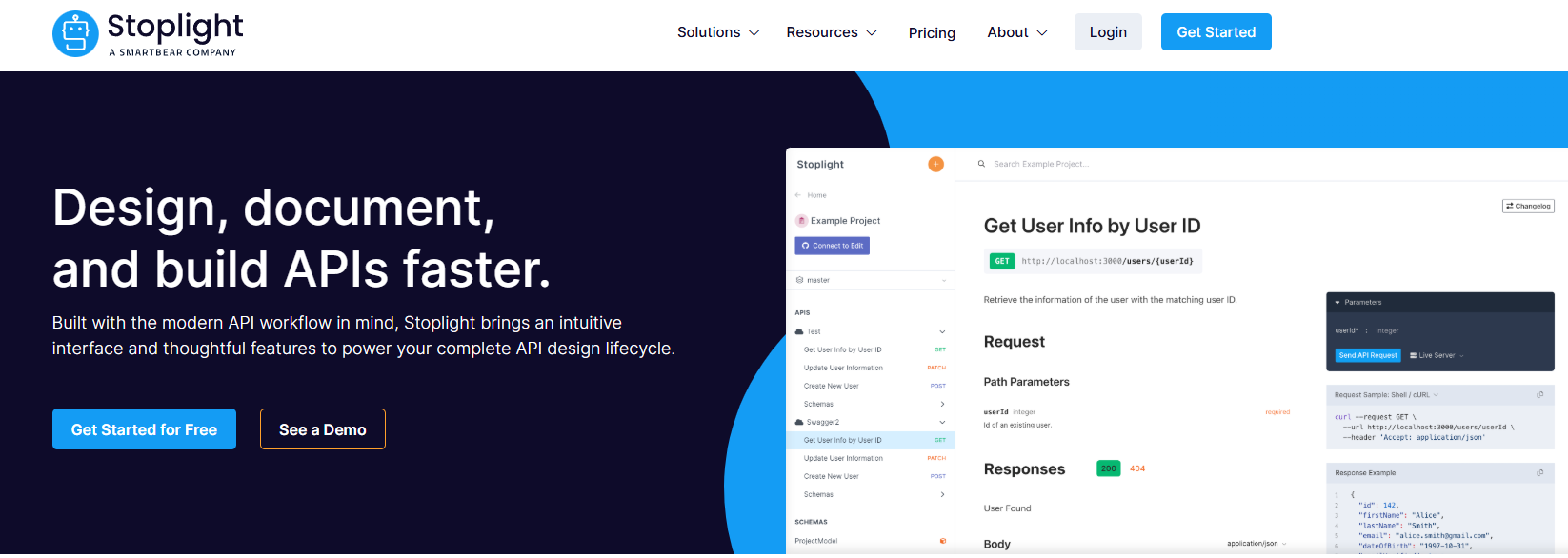
Stoplight is a platform built from the ground up for a "design-first" philosophy. It focuses on using the OpenAPI Specification (OAS) as the single source of truth for your API lifecycle.
Stoplight's Core Strengths:
- Visual API Designer: A flagship feature is its visual editor for OpenAPI specs. This is a game-changer for those who find YAML/JSON intimidating, allowing product managers and architects to contribute directly to the API design.
- Powerful Governance: Stoplight excels at enforcing API style guides and consistency across your organization using Spectral rules. This ensures all your APIs look and behave the same way.
- Integrated Mocking: Like Apidog, Stoplight provides automatic mock servers from your OpenAPI spec, which are great for early development and feedback.
How It Compares:
Stoplight's primary focus is on the design and governance phase. While it has testing features, they are not as deeply integrated or as powerful as the dedicated testing environments in Apidog or Postman. It's the go-to for teams where API consistency and design rigor are the highest priorities.
5. Insomnia: The Developer-Friendly Client
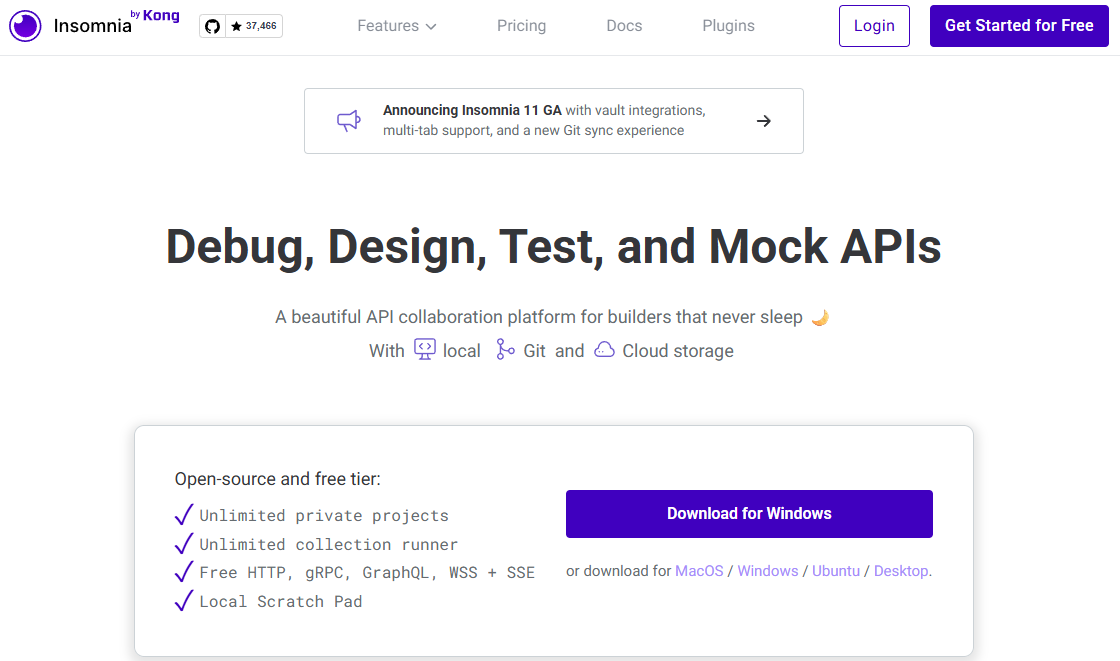
Insomnia has earned a loyal following among developers who prefer a clean, open-source-first, and focused API client. It's often seen as a more streamlined alternative to Postman.
Why Developers Love Insomnia:
- Clean and Intuitive UI: The interface is uncluttered and a joy to use, which significantly lowers the barrier to entry.
- Git Syncing: With its paid "Insomnia Teams" plan, you can sync your API designs, tests, and environments directly with a Git repository. This provides built-in version control and a familiar collaboration model for developers.
- Plugin Ecosystem: Its plugin system allows teams to customize and extend its functionality to fit their unique needs.
Considerations:
Its core mocking capabilities are more basic than those of Apidog or Stoplight. Its real strength lies in being an excellent API client and designer, with collaboration being a paid feature.
6. Karate DSL: The Testing Powerhouse for Automation Engineers
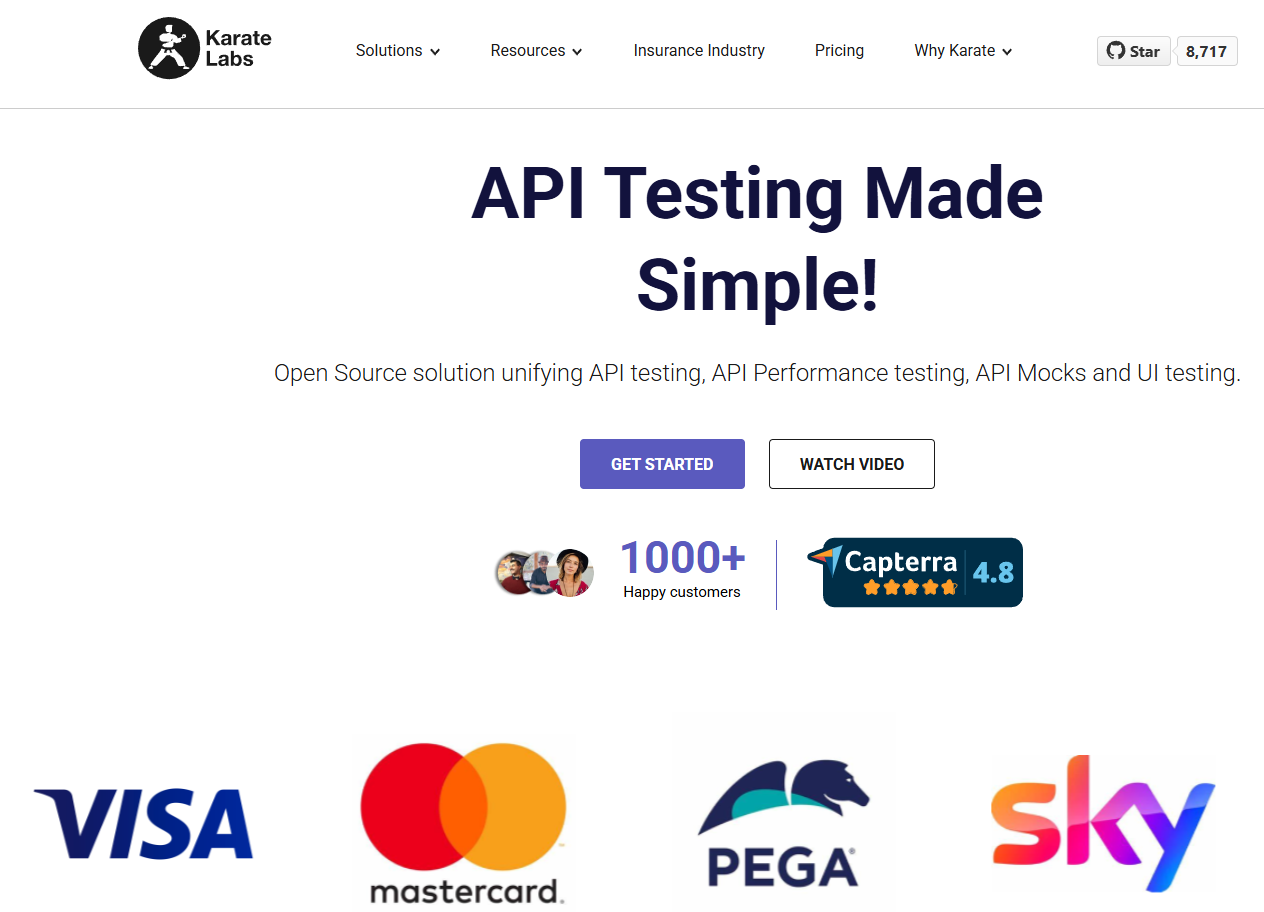
Karate takes a completely different approach. It's not a GUI-based tool; it's an open-source framework that allows you to write API tests in a domain-specific language (DSL) that looks like plain English.
Karate's Unique Edge:
- No Coding Required (for basic tests): You can write complex API tests, including scenarios that involve databases, without writing Java or JavaScript code. The DSL is designed to be readable by non-programmers.
- Integrated Testing: Karate can handle API testing, UI testing (via Selenium), and performance testing in the same framework, which is a unique advantage.
- Built-in Assertions and More: It comes with powerful built-in capabilities for assertions, data-driven testing, and parallel execution right out of the box.
The Learning Curve:
The trade-off is that you have to be comfortable working within a code-based framework (it's built on Java). It's less about exploratory testing and more about building a robust, automated test suite.
7. WireMock: The Enterprise-Grade Mock Server
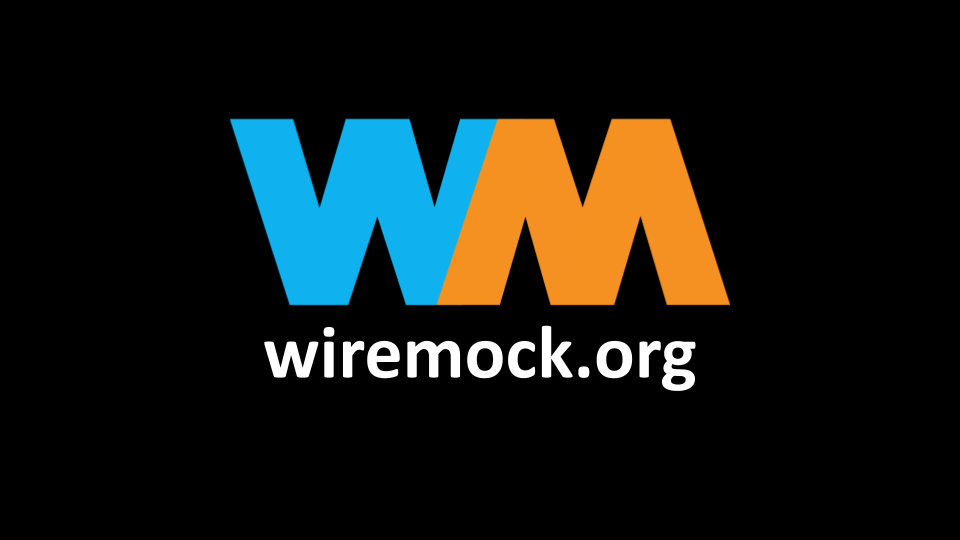
For teams that need ultimate control and flexibility for mocking in development and testing environments, WireMock is a battle-tested, open-source solution.
WireMock's Power:
- Ultimate Flexibility: It's a Java-based library that can be run as a standalone server or embedded in your JVM applications. You can simulate any conceivable HTTP response and create complex request-matching rules.
- Record & Playback: You can "record" traffic from a real API and then "play it back" from WireMock, making it easy to create realistic mocks of existing services.
- Ideal for Contract Testing: It's widely used in microservices architectures for consumer-driven contract testing, where services agree on a contract and WireMock acts as a stub for the provider.
The Complexity:
WireMock is a developer-centric tool that requires coding and configuration to set up. It's not a GUI-based tool for quick mocking but a framework for building a sophisticated mocking infrastructure.
Making the Final Choice: A Quick Comparison
| Feature | Apidog | Postman | Mockoon | Stoplight | Insomnia | Karate | WireMock |
|---|---|---|---|---|---|---|---|
| Primary Strength | All-in-One Lifecycle | Ecosystem & Features | Lightweight Mocking | Design & Governance | Developer UX | Code-Based Testing | Enterprise Mocking |
| Mocking | Excellent | Good | Excellent | Excellent | Basic | Via Code | Excellent |
| Testing | Excellent | Excellent | No | Fair | Excellent | Excellent | Limited |
| Collaboration | Excellent (Real-time) | Good (Paid) | Limited | Excellent | Good (Paid) | Via Code | Via Code |
| Learning Curve | Moderate | Moderate | Easy | Moderate | Easy | Steep | Steep |
| Best For | Teams wanting one tool | Large, established teams | Quick, local mocks | API-first, governance | Developers who love Git | QA Automation Engineers | Java/microservice teams |
Real-World Example: Using Apidog in a Team
Imagine your frontend team is building a dashboard while the backend team is still working on the API.
Here’s how Apidog fits in:
- Backend team defines the API endpoints in Apidog.
- Frontend team mocks the endpoints using Apidog’s mock server.
- Both teams test their requests and responses.
- Once the backend is live, the same test cases are reused for real APIs.
- CI/CD pipeline runs automated tests every time code is deployed.
No waiting. No miscommunication. Just smooth collaboration.
That’s the beauty of Apidog.
Conclusion: Your Team's Workflow is the Deciding Factor
So, which tool is the "best"? As you can see, there's no one-size-fits-all answer.
- Choose Apidog if you believe in a unified, collaborative workflow and want to manage the entire API lifecycle from design and mocking to testing and documentation in a single, integrated platform. It's the best choice for eliminating context-switching and friction.
- Choose Postman if you're already deeply embedded in its ecosystem or need the vast resources of its public API network.
- Choose Mockoon if your sole, singular focus is creating fast, local, and powerful mock servers and you're happy using other tools for testing.
- Choose Stoplight if your top priority is a strict, design-first methodology with strong governance and style guide enforcement.
- Choose Insomnia if you're a developer-centric team that loves a clean UI and deep Git integration.
- Choose Karate or WireMock if you are building complex, automated test suites and need the power and flexibility of a code-based framework.
The overarching trend is clear: the future is moving towards integrated platforms that break down the walls between design, mocking, and testing. Tools like Apidog are leading this charge by providing a seamless experience that empowers entire teams to collaborate more effectively.
Investing in the right API tool isn't just about buying a piece of software; it's about investing in a smoother, faster, and more reliable software delivery process. Choose wisely, and you'll not only build better APIs, but also build them better, together.
